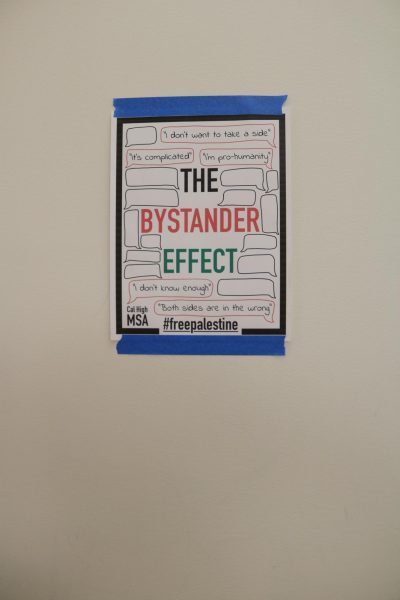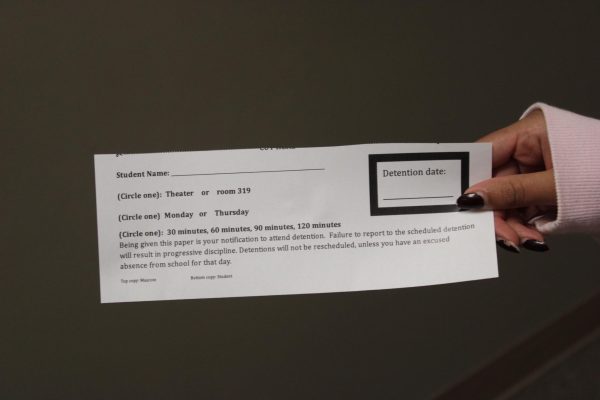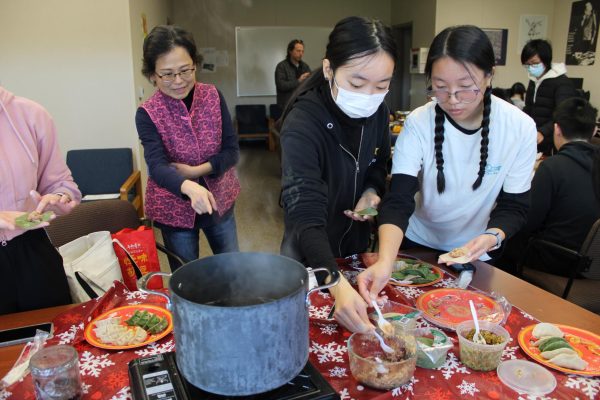Gender blind grad gowns
All students will wear black gowns at June graduation
With a trend toward the support of equal rights for the gay and transgender community, Cal High administrators have decided that all students in the Class of 2016 will wear black gowns at graduation this June.
Boys have worn black gowns and girls white ones at past graduation ceremonies.
“The purpose of this [new] policy is to not identify people by gender,” said assistant principal Crystal Lopez, who believes the color black looks more formal than white, or the school’s other color, orange.
Lopez said Cal was not influenced by Dougherty Valley High and the other East Bay high schools that have also decided to make their grad gowns a uniform color for all students. She also said that the only factor behind the decision was an attempt to make the school reflect a more modern perspective.
The change at Dougherty was led by gender-nonconforming senior Kyle Doan, who wrote in an email that there had been somewhat of an unspoken rule at Dougherty that guys wear navy blue grad gowns while girls wear light blue grad gowns.
“I felt that it was necessary to change the colors because of an incident that occurred my freshman year (2012-2013) in which a senior, who was transgender, was unsure of what gown color to choose,” Doan wrote. “This was an extremely triggering situation for her and prompted teachers, our school’s (Gay Straight Alliance), and myself to take action.”
Doan and other students fought hard to make the change for a uniform grad gown color, but the process wasn’t easy.
“When our current principal, [Daniel] Hillman, became principal of DVHS, we began to enforce the change and to talk about it more,” he wrote. “It took about three years to finalize.”
After the school failed to implement the change for the Class of 2015, Dougherty adopted the new policy this year.
“I think that these changes will definitely help transgender students,” Doan wrote. “What matters to me and what I want everyone to take away from this entire situation is that there are different kinds of people and they need to be recognized and respected.
“If even one student feels misrepresented, ostracized, or uncomfortable, I want that to be addressed and if a school-wide change seems necessary, then it is necessary,” Doan wrote.
Doan also noted that the initial reactions to the policy at Dougherty were generally not positive. Girls were especially upset by the change because it would prevent their senior portraits from matching their graduation pictures.
Junior Saadhana Deshpande, president of Cal’s LGBT club, agrees with Doan’s perspective.
“It’s cool that the [Cal] administration is trying to be gender-inclusive as some people are not gender-binary but genderless,” she said.
She feels the decision reflects the goals of the LGBT club.
“Generally we try to make the school gender inclusive so it’s nice that [administrators] are not going against one gender or the other,” Deshpande said.
But junior Joyce Chen, who was informed of the policy by her sister, felt the change was unnecessary.
“I don’t think that the color of the gowns defined gender,” she said. “I don’t think it [the color] is a big deal and needed to be changed.”
Senior Clevian Hsia favored having a mix of black and white gowns since white gowns looked better with dresses.
“I think that, if anything, students should have the choice to pick what color gown they want,” she said.
Junior Marley Fernandes agreed that students should have an option to choose white or black gowns rather than having an assigned color. But she does feel having one neutral color is the fairest policy for all students.
Doan raised a similar point in his email that many students at Dougherty felt that transgender students should have a choice in deciding grad gown color since color wasn’t defined to any specific gender.
“There’s an underlying norm that people feel inclined to follow and regardless of how anyone thinks it can change, it can’t be because peer pressure is such a prevalent influence,” Doan wrote.
With the new policy, Cal High will be breaking away from its long-lasting tradition of males and females wearing different colored gowns at graduation.
“Girls used to be in orange [grad gowns] and boys in black for many years,” said math teacher Fred Albano, who started teaching at Cal High a few years after it opened in 1973.
Females later switched to white gowns, which they wore through last June’s graduation ceremony. Males have always worn black gowns. Lopez said the new policy is guaranteed for this year’s graduating class.













